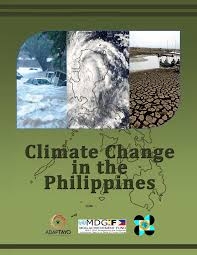Climate Change in the Philippines
Climate change is happening now. Evidences being seen support the fact that the change cannot simply be explained by natural variation. The most recent scientific assessments have confirmed that this warming of the climate system since the mid-20th century is most likely to be due to human activities; and thus, is due to the observed increase in greenhouse gas concentrations from human activities, such as the burning of fossil fuels and land use change. Current warming has increasingly posed quite considerable challenges to man and the environment and will continue to do so in the future. Presently, some autonomous adaptation is taking place, but we need to consider a more pro-active adaptation planning in order to ensure sustainable development.
What does it take to ensure that adaptation planning has a scientific basis? Firstly, we need to be able to investigate the potential consequences of anthropogenic or human-induced climate change and to do this, a plausible future climate based on a reliable and accurate baseline (or present) climate must be constructed. This is what climate scientists call a climate change scenario. It is a projection of the response of the climate system to future emissions or concentrations of greenhouse gases and aerosols and is simulated using climate models. Essentially, it describes possible future changes in climate variables (such as temperatures, rainfall, storminess, winds, etc.) based on baseline climatic conditions.
The climate change scenarios outputs (projections) are an important step forward in improving our understanding of our complex climate, particularly in the future. These show how our local climate could change dramatically should the global community fail to act towards effectively reducing greenhouse gas emissions.














